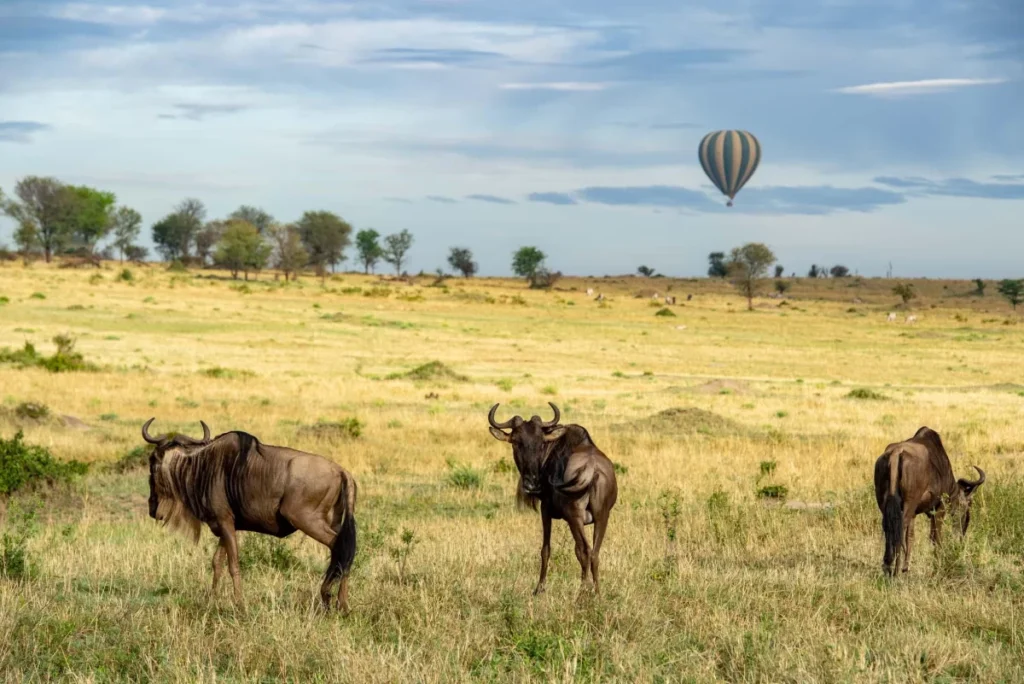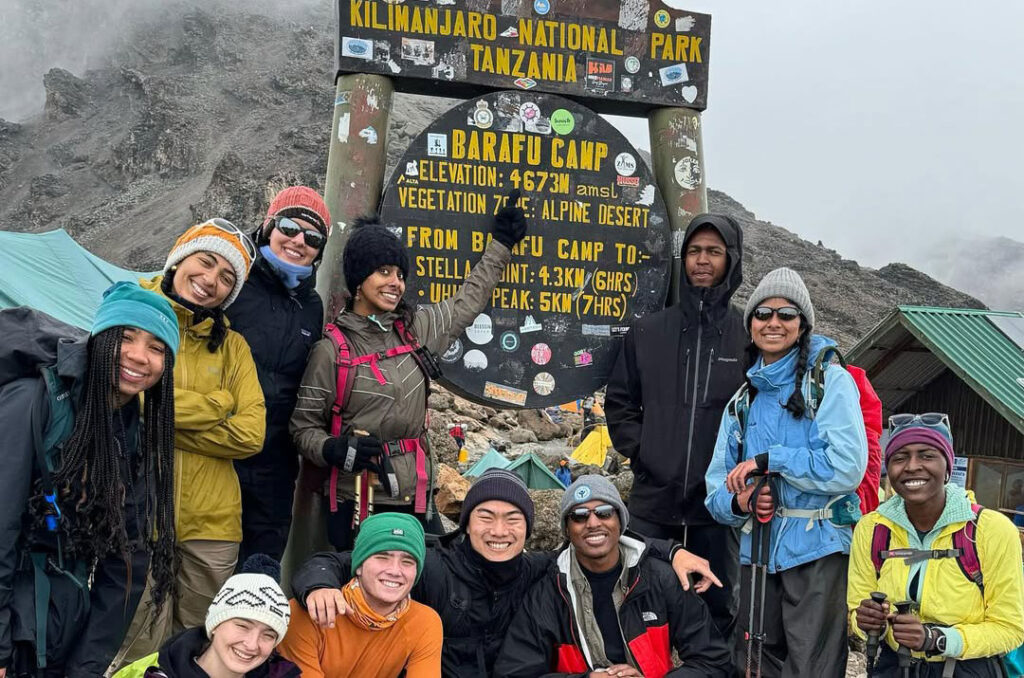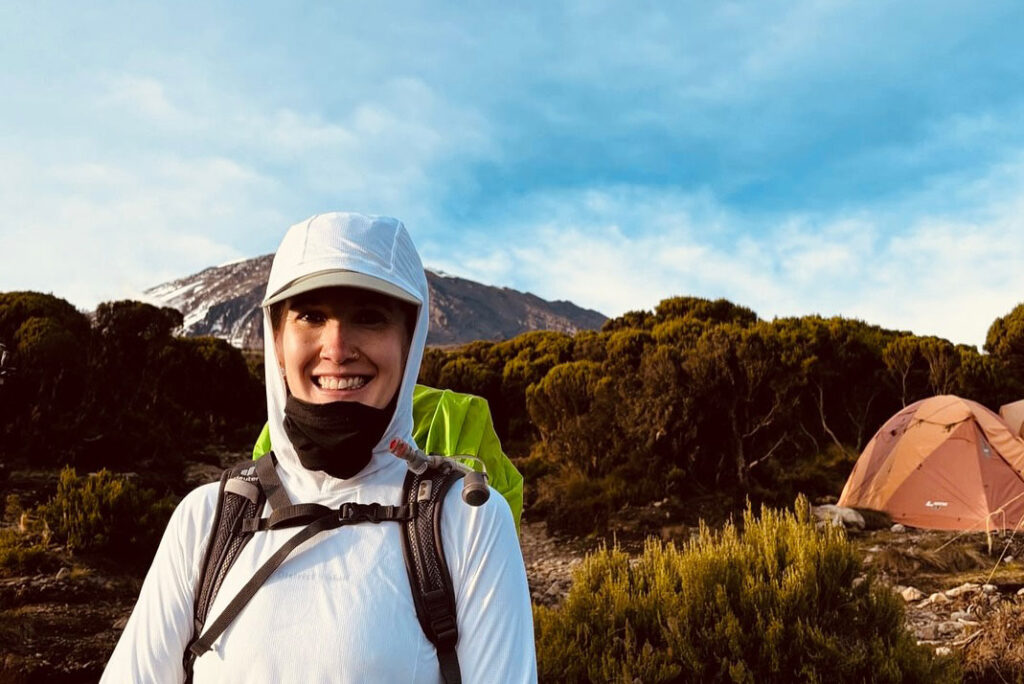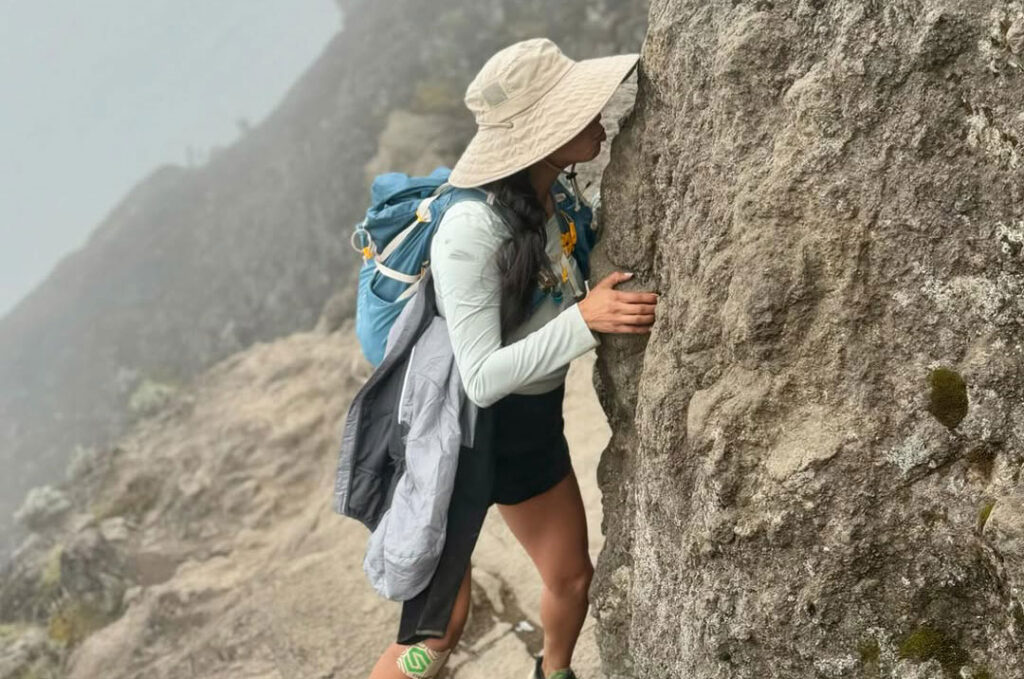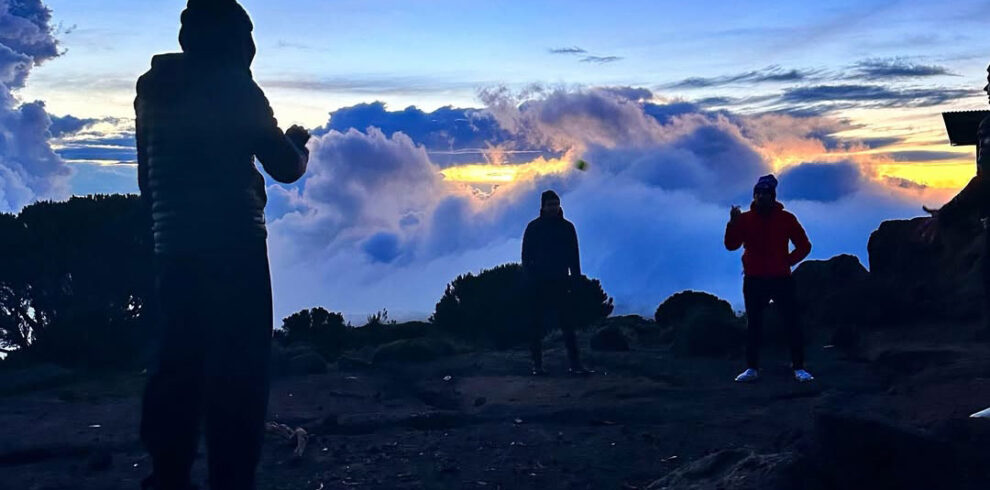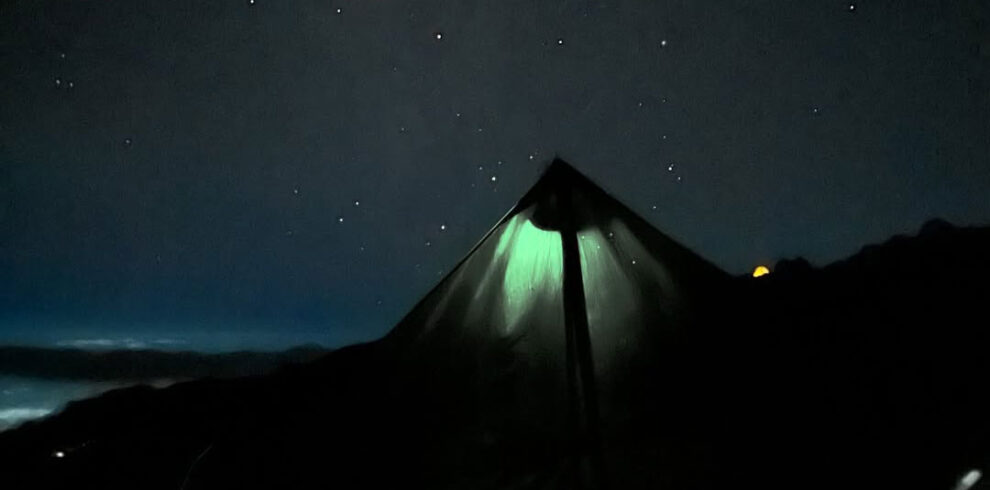Overview
Embark on an unforgettable 10-day adventure with 6 days hiking the iconic Machame Route on Mount Kilimanjaro, known for its scenic landscapes and diverse ecosystems. Trek through lush rainforests, alpine meadows, and volcanic terrain, culminating in the breathtaking summit at Uhuru Peak. After conquering the mountain, spend Day 7 flying to the beautiful island of Zanzibar, where you’ll relax on pristine beaches, soak up the sun, and enjoy the tranquil coastal atmosphere for the next 3 days, making this the perfect combination of adventure and relaxation.
Highlights
- Scenic Machame Route Trek: Experience the beauty of Kilimanjaro’s diverse ecosystems, from lush rainforests to alpine meadows, leading to the summit at Uhuru Peak.
- Summit at Uhuru Peak: Reach the iconic summit of Mount Kilimanjaro (5,895m), the highest point in Africa, and enjoy panoramic views of the surrounding landscape.
- Challenging Adventure: Push your limits while trekking one of the most popular and rewarding routes on Kilimanjaro, offering a true sense of accomplishment.
- Zanzibar Beach Bliss: After your trek, unwind on the stunning beaches of Zanzibar, soaking in the sun, crystal-clear waters, and tranquil island vibe.
- Cultural Exploration: Discover Zanzibar’s rich culture and history, with opportunities to explore Stone Town, spice plantations, and local markets.
Itinerary
Depart Machame Gate and trek upwards through the montane rainforest, characterized by dense vegetation, a muddy trail, and short sections of steep climbs where you may hear the calls of many exotic birds and if we are lucky we may see blue monkeys on the forest canopy and hear the grunting calls of the magnificent black colobus monkeys with their long ‘cape’ of white hair and a flowing white tail.
Our first campsite, Machame Camp, is right after the dense tree cover in an area with lower but still thick bush where Podocarpus (African yellow-wood), Hagenia, and Hypericum (St John’s Wort) dominate. In the evening you may hear the unmistakable shrieking call of the tree hyrax.
Hiking Time:6-7 hours
Total Distance:8.2 km
Starting Altitude: 1829m (6,000ft)
Final Altitude:3030m (9,950ft)
Today we continue through increasingly sparse trees and bushes into moorlands. Picturesque hanging mosses often cover trees offering an ethereal quality to the landscape. The day finishes with Shira Camp, which is on a small plateau in the high moorlands and features views of Kibo in the northwest and Mount Meru towards the east. White-necked ravens can be seen throughout the day and around our campsite.
Today’s Stats
Hiking Time:7-8 hours
Total Distance:5 km
Starting Altitude: 3030m (9,950ft)
Final Altitude:3840m (12,600ft)
Environment: Moorland
Today we turn east and continue to climb “pole pole” (slowly, slowly) through increasingly rocky and desolate terrain. We will leave the moorland behind and continue up a rocky path through typical Kilimanjaro mountain vegetation of Senecios and Lobelia. We will pass through the alpine moorland zone where plants are extremely hardy and consist of lichens, grasses, and heather, to reach Kilimanjaro’s alpine desert zone.
We take lunch at Lava Tower (4630m) and for those who feel up to it you can undertake an optional rock scramble (non technical) to the top of Lava Tower where you will have spectacular panoramic vistas of the Karanga Valley below, Shira Plateau and the spectacular Western Breach above.
From Lava Tower, we descend steeply for 2 hours down more than 600m into the Great Barranco Valley. This descent affords fantastic views and some great photo opportunities of the Western Breach and Breach Wall. You will also feel the clear benefits of this acclimatization day as we lose altitude down to the camp.
Barranco Camp is set on a col (flat area) enclosed on three sides by the Breach Walls, and the Kibo massif itself. Hanging glaciers shimmer in the sunshine above amidst the eerie landscape of plants such as the giant groundsels, and the uniquely endemic Giant Lobelia. This is definitely the toughest day so far, but incredibly beautiful.
Hiking Time:6-7 hours
Total Distance:7 km
Starting Altitude: 3840m (12600ft)
Final Altitude:4642m (15230ft)
Environment: Semi-Alpine Desert
Today we undertake the Great Barranco Wall – an imposing face above Barranco camp. A steady climb up the eastern wall takes us just below the Heim Glacier, where we may have some breathtaking views of the Heim Glacier and Mt. Kilimanjaro depending upon the weather and any cloud cover.
Our trail continues down into the alpine desert of the Karanga Valley. Here the temperature will grow colder as we follow the trail climbing through this barren and dry landscape up to the Barafu camp. Barafu is the Swahili word for “ice”, and the camping area is on a ridge in a narrow and exposed flat area.
Here there are ever-present powerful winds blowing down from the mountain peaks. Our campsite at 4600m offers spectacular views of the nearby peaks of Kibo and Mawenzi.
In preparation for your final ascent tonight, you will familiarize yourself with the terrain before dark, and prepare your equipment and thermal clothing for the summit attempt. Sleep will be difficult, though you will to retire to your tents after dinner to rest for the 1385m final ascent to the roof of Africa.
Hiking Time:6-7 hours
Total Distance: 11.4 km
Starting Altitude: 3978m
(13054ft)
Final Altitude:4600m (15200ft)
Environment:Alpine Desert
We will rise early to leave camp at around 12am and after a warm drink and a light snack, you will begin the most difficult though most rewarding day of the trek – your hike to the roof of Africa. After approximately 6 hours of slow but strenuous hiking, you will reach the rim of the main crater, Stella Point, at 5685m. At this point, we stop to rest, eat lunch and take in the views over the clouds. From Stella Point, the trail is normally snow-covered, and every step of the 2-hour final ascent to Uhuru peak is challenging. Passing alongside the iridescent blue Rebmann and Tarzel glaciers we reach Elveda Point (5882) we can see Uhuru Peak now only minutes away. The roof of Africa is within your grasp.
Arriving at the summit you feel a huge sense of elation and accomplishment you have done it, you have made it to the highest point in Africa. We spend as much time as you need to appreciate your accomplishment, as this is a day to remember for the rest of your life! The time you will spend on the summit will depend on the weather conditions and temperature.
We start back down the same trail and descend to Barafu camp. Here you will have a well-earned but short rest and remove some of your many layers of clothing as the day begins to heat up. We head down the rock and scree path into the moorland zone, reaching the forest, and eventually arriving at Millennium Camp in the early afternoon where a hot shower and meal awaits. Today is the longest, and the most mentally and physically challenging of the trek. But a life changing day that will stay with you forever, as you conquered the heights of Kilimanjaro.
Hiking Time:7 hrs to summit, 7-8hrs descent
Total Distance:7km to summit, 23km descent
Starting Altitude: 4682m
Summit Altitude:5895m – Uhuru Peak
Final Altitude:3819m (12530ft)
Environment:Stone Scree, ice capped summit, Alpine desert
Today your legs will be further tested as the trail descends steeply through the lush Mweka rainforest. The trail is steep in places and the going slippery if wet.
The route follows the crest of a broad ridge separating two river valleys until it meets with a road that leads us for the last 40 mins to the Mweka Park Gates where we stop for a well-deserved picnic lunch where successful hikers will receive their summit certificates (gold for Uhuru Peale, Green for Stella point) from the Kilimanjaro National Park Authority.
Post celebrations, we are taken by either private bus or Jeep to our hotel in Moshi.
Hiking Time:5-6 hours
Total Distance:13.5 km
Starting Altitude: 3819m
(15530ft)
Final Altitude:1652m (5420ft)
Environment: Montane (rain) forest
After a scrumptious breakfast, your adventure continues through the fertile highlands of Tanzania, where you’ll pass through the lush rainforests of the Ngorongoro Conservation Area. Keep your eyes peeled—you may be lucky enough to spot baboons, leopards, and elephants hidden within the dense vegetation.
As you traverse this breathtaking region, you’ll be mesmerized by the stunning Ngorongoro Crater, a UNESCO World Heritage Site and one of Africa’s most remarkable natural wonders. From there, your journey leads to the legendary Serengeti National Park, where the vast landscapes unfold before you—golden savannahs, shimmering lakes, lush swamps, and endless grassy plains teeming with wildlife.
Upon arrival, enjoy an exhilarating game drive, witnessing the Serengeti’s abundant wildlife in its natural habitat. As the sun sets, retreat to your luxurious accommodation, where a delightful dinner and a peaceful night’s rest await you, preparing you for more unforgettable adventures ahead.
Today, after a delicious early breakfast, you will depart for the breathtaking Ngorongoro Crater, enjoying a scenic game drive en route. As one of the most stunning natural wonders in the world, this UNESCO World Heritage Site offers the best opportunity in East Africa to spot the Big Five in a single game drive. Upon reaching the crater’s edge, you’ll be greeted by a spectacular panoramic view of the 20 km-wide caldera before descending into its wildlife-rich plains on an adventurous trail. Home to over 25,000 animals, including hyenas, hippos, lions, elephants, and the critically endangered black rhino, Ngorongoro is truly a wildlife paradise. You will also have the opportunity to experience the vibrant Maasai culture, interacting with the local people who coexist harmoniously with the wildlife.
A hot gourmet lunch will be served at a scenic picnic spot by the hippo pool, allowing you to relax while admiring the tranquil surroundings. After lunch, continue exploring the crater’s diverse ecosystems and abundant wildlife before ascending back to the rim. As the day comes to an end, you will drive back to Karatu, where a luxurious lodge awaits you with a warm welcome, a sumptuous dinner, and a peaceful overnight stay.
After an early breakfast your adventure begins with a scenic drive to Tarangire National Park, a hidden gem known for its iconic baobab trees and vast elephant herds. Upon arrival, embark on a thrilling game drive, where you’ll encounter diverse wildlife, including lions, leopards, giraffes, and a variety of antelope species. The park’s lifeline, the Tarangire River, attracts an abundance of animals, making it a prime location for exceptional wildlife sightings.
At midday, enjoy a gourmet bush lunch in a picturesque setting, surrounded by the beauty of the African wilderness. Afterward, continue exploring the park, taking in its breathtaking landscapes and rich biodiversity. As the sun begins to set, you’ll leave Tarangire and drive to Karatu City, where a luxurious safari lodge awaits.
After a final breakfast by the beach, you’ll have some free time to relax or shop for souvenirs. Depending on your flight time, you can take one last walk along the beach or enjoy the resort’s amenities. At the scheduled time, you will be transferred to Kilimanjaro Airport for your flight home, taking with you unforgettable memories of your Kilimanjaro adventure and peaceful Safari.
Group Discount
| Number of Travelers in Group Discount | Cost Per Traveler in US($) |
|---|---|
| 1 Person | 1,950 |
| 2-4 People | 1,750 |
| 5- 7 People | 1,650 |
| 8 – People | 1,550 |
Cost
The Cost Includes
- Pre & Post Trek accommodation
- Professional guides, cooks and porters
- Transportation to & from the mountain gate
- Park fees, camping fees & rescue fees
- VAT fees and Charges
- Double layered Sleeping Mats
- 3 meals daily while on the mountain
- Filtered water throughout the trek
- Portable toilets and toilets tents
- Hot Water For Washing Purpose
- Pick up and drop off at the airport.
- Fair wages for the mountain crew.
The Cost Excludes
- International flights
- Tip to the driver guide and hoteliers
- Insurance fees
- Cost of Tanzania Visa.
- Bank charges
- Personal Expenses
FAQs
Mount Kilimanjaro can be climbed year-round, but the best times are during the dry seasons, from mid-June to October and December to February. These months offer clear skies and better weather conditions for the climb.
There are two rainy seasons: the long rains from March to May, and the short rains in November. While weather can vary, the dry months of July, August, September, and part of October, January, and February are considered the high season. The transition months—December, March, and June—are less predictable. The wettest months, with heavy rains and poor visibility, are April, May, and November.
For those seeking clear skies and good visibility, climbing during the dry season is ideal. However, some climbers prefer summiting during a full moon for a bright, beautiful ascent under the moonlight, adding to the experience with enhanced visibility and stunning landscapes.
Our guides are highly experienced, with years of climbing Kilimanjaro to earn their KINAPA National Park license. They are Wilderness First Responders, trained to handle injuries or emergencies.
They are proficient in using medical equipment, including oxygen, pressure altitude chambers, and stretchers. In case of an emergency, they can quickly facilitate communication with the Jaribu base using our Thuraya satellite phone.
Guides are also trained to assess when an evacuation is necessary and know how to carry it out safely.
The most flexible way of adjusting to the ever-changing conditions as you trek higher is the layering of several thin articles of clothing which you can add or remove as the conditions dictate.
Choosing the right route for climbing Mount Kilimanjaro depends on your preferences, experience, and goals. Here are some key factors to consider:
-
Marangu Route: Known as the “Coca-Cola” route, it’s the only route with hut accommodation and is popular for its relatively easier ascent. It’s ideal for those with limited backpacking experience and for those seeking a shorter climb (5-6 days).
-
Machame Route: This is one of the most popular routes, offering stunning scenery and a slightly more challenging climb. It’s suitable for climbers looking for a more immersive experience with varied landscapes (6-7 days).
-
Rongai Route: For a more remote, less crowded experience, the Rongai route is ideal. It’s the only route approaching from the north and is great for avoiding heavy rainfall during the rainy season (6-7 days).
-
Lemosho Route: This route is known for its beautiful scenery and a longer duration (7-8 days), which provides better acclimatization. It’s ideal for those looking for a less crowded experience with a slower ascent.
-
Northern Circuit: The longest and newest route, offering incredible views and a true wilderness experience. It’s perfect for those seeking a more gradual ascent and an off-the-beaten-path experience (9 days).
The time needed (days, weeks, or months) to train for Kilimanjaro depends upon your level of fitness. But usually, it requires around a month to be prepared for your trek. It is advisable to do staircase training, cardiovascular exercises and upper body exercises. Eat right and do more of aerobic exercises before the trip. Also if possible you can climb a hill to practice for the trek. Overall it is not necessary to be perfectly fit for climbing the mountain. As apart from physical training, mental preparedness is more important for high success rate on the summit.
For experienced climbers, Mount Kilimanjaro will take around 5 to 6 days to reach the top, and is not that hard. Even for new climbers, our guides will help you climb the mountain with ease. But you need to give extra days for acclimatization for maximum success rate at the summit. For new climbers however, climbing Kilimanjaro becomes easier with our trained professionals and porters who help the climbers carry their essential equipment or gear up the summit.
We recommend you wearing multiple layers of clothing. It is the best way to keep your body in the desired temperature range no matter what the environment is. The temperatures you may encounter on Mount Kilimanjaro can be over 37 °C (degrees Celsius); 100 °F (degrees Fahrenheit) to well below zero.
At the Uhuru Point, temperatures can range between -7 °C to -29 °C (degrees Celsius); 20 °F to -20 °F (degrees Fahrenheit). Mount Kilimanjaro has extreme, variable, and impossible weather to predict. It is therefore advised to get many layers of clothing gear for the trek. Layering helps keep the body warm in extreme cold wave conditions on the summit. Migration Venture Africa provides these gears as a rental option as well.
The best time to climb Kilimanjaro are from January-March and June-October. Generally, January-March is colder than June-October and there is a higher probability of encountering snow on the summit. It depends on the climbers whether they want to experience the snow-covered peaks of the summit or the more pleasant time period after June. The beauty of the mountain is at its best during the dry season of June-October. It is advisable to climb the mountain during this time.
A comfortable sleep is very important to get reenergized at next morning to continue the trek. Kilimanjaro gear is necessary for a cozy sleep. Essential gear like a K-way sleeping bag, foam mattress, and Kilimanjaro pillow can be carried on the trek. Migration Venture Africa also provides these gears on rent for which it is necessary to apply beforehand. You can speak to our staff personally regarding any queries about the Kilimanjaro gears.
